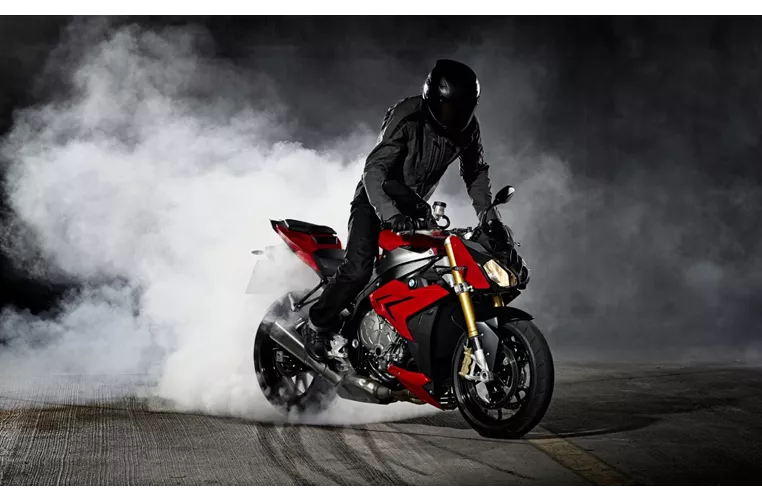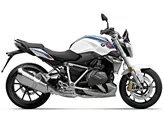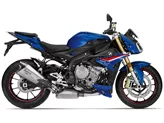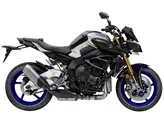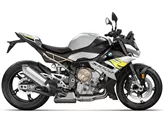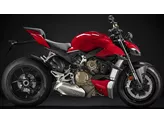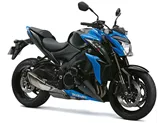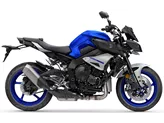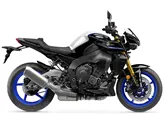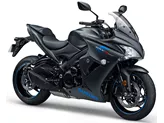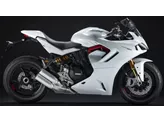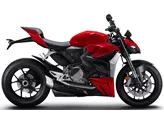BMW S 1000 R 2014 vs. Yamaha MT-10 SP 2017

BMW S 1000 R 2014

Yamaha MT-10 SP 2017
Overview - BMW S 1000 R 2014 vs Yamaha MT-10 SP 2017
In terms of engine and drive train, both the BMW S 1000 R 2014 and the Yamaha MT-10 SP 2017 have similar specifications. They both have an in-line engine with 4 cylinders and a displacement of around 1000cc. The engine power is also the same at 160 HP, although the BMW has a slightly higher torque of 112 Nm compared to the Yamaha's 111 Nm.
In terms of suspension, both bikes feature upside-down telescopic forks at the front and a swing arm with a monoshock at the rear. The chassis of both bikes is made of aluminum, providing a lightweight and rigid structure. However, the BMW has a twin tube frame, while the Yamaha has a Deltabox frame.

BMW S 1000 R 2014
When it comes to braking, both bikes have double disk brakes at the front. The Yamaha also has ABS, which is an advanced rider assistance system not present in the BMW. Additionally, the Yamaha has electronically adjustable suspension, riding modes, ride by wire, and traction control, making it more advanced in terms of rider assistance systems.
In terms of dimensions and weights, both bikes have the same front and rear tire widths and diameters. The wheelbase of the BMW is slightly longer at 1439 mm compared to the Yamaha's 1400 mm. The seat height of the Yamaha is also slightly higher at 825 mm compared to the BMW's 814 mm. The kerb weight of the Yamaha is slightly heavier at 210 kg compared to the BMW's 207 kg. Both bikes have a fuel tank capacity of around 17 liters.
In terms of strengths, the BMW S 1000 R 2014 is praised for its sporty chassis, extreme power and performance, very good electronic helpers, terrific price/performance ratio, and its ability to perform well on the racetrack and country roads. On the other hand, the Yamaha MT-10 SP 2017 is praised for its great chassis, high ride comfort and utility comfort due to the electronic chassis, emotional yet cultivated engine, pleasant wind protection, and balanced overall package despite its radical looks and wicked sound.

Yamaha MT-10 SP 2017
In terms of weaknesses, the BMW S 1000 R 2014 is criticized for its slightly rough engine running, DDC suspension that is on the "hard" side overall, relatively high seat, tendency to overdrive, and its design being a matter of taste. The Yamaha MT-10 SP 2017 is criticized for its traction control not being up to the level of the Aprilia and having too inactive seating position on the racetrack.
Overall, both the BMW S 1000 R 2014 and the Yamaha MT-10 SP 2017 have their strengths and weaknesses. The BMW offers a sportier experience with its powerful engine and good electronic helpers, while the Yamaha provides a more comfortable and balanced ride with its advanced rider assistance systems and high ride comfort. Ultimately, the choice between the two would depend on the rider's preferences and priorities.
Technical Specifications BMW S 1000 R 2014 compared to Yamaha MT-10 SP 2017
Pros and Cons in comparison
Pros and Cons in comparison
BMW S 1000 R 2014

Brutal power, smooth, almost perfect, electronics, it only gets better with the HP4. Now BMW dominates the 1000cc naked bike class after the superbikes.
Yamaha MT-10 SP 2017

With the SP version, the MT-10 becomes cooler, more desirable and, thanks to the high-quality chassis, better. The semi-active suspension from the R1M is the best in the naked bike league. Highest quality and best function in combination. The chassis also excites on the racetrack. Nevertheless, the MT-10SP is not a racing machine, because the seating position is not active enough for that.
Price Comparison Avarage Market Price BMW S 1000 R vs Yamaha MT-10 SP
There are a few key differences between a BMW S 1000 R 2014 and a Yamaha MT-10 SP 2017. In terms of price, the actual average price of a Yamaha MT-10 SP 2017 is about 30% higher. A BMW S 1000 R 2014 experiences a loss of 600 GBP in one year and 620 GBP in two years of ownership. This is offset by a loss of 2,350 GBP and 1,600 GBP for a Yamaha MT-10 SP 2017. Compared to Yamaha MT-10 SP 2017 there are more BMW S 1000 R 2014 bikes available on the 1000PS.de Marketplace, specifically 19 compared to 4. It takes less time to sell a BMW S 1000 R with 70 days compared to 123 days for a Yamaha MT-10 SP. Since model year 2014 1000PS.de editors have written 62 reviews for the BMW S 1000 R and 18 reviews for the Yamaha MT-10 SP since model year 2017. The first review for the BMW S 1000 R was published on 03/11/2013 and now has more than 17,300 views. This compares to more than 28,600 views for the first review on Yamaha MT-10 SP published on 04/10/2016.
